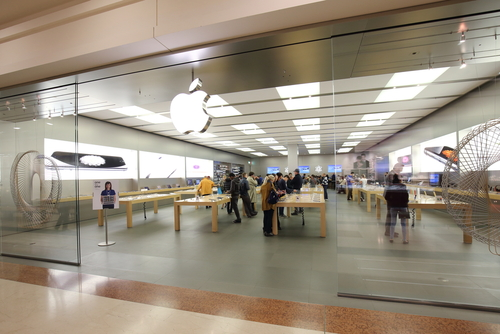Stunning New iPhone Leaks, Three Risky iPhones For 2018, Facebook Prepared Apple Strike
Taking a look back at another week of news from Cupertino, this week’s Apple Loop includes three lenses for one iPhone, three iPhones for one launch, the new Product(Red) iPhone 8 and 8 Plus, Apple locking you into iOS 11.3, the new Foundation TV series for Apple TV, and Mark Zuckerberg’s planned sideswipe at Apple in Congress.
Apple Loop is here to remind you of a few of the very many discussions that have happened around Apple over the last seven days.
Apple’s Triple Play On One iPhone
Apple is expected to increase the stakes in the smartphone camera battle later this year by outfitting its largest iPhone with a ‘three lens’ camera offering up to x5 optical zoom. While a new feature for iOS, it would be matching the impressive results of Huawei’s P20 Pro.
This would be a huge step up from the 2x optical zoom in the iPhone X and iPhone 8 Plus and give Apple a major differentiator over its rivals. Furthermore, the early signs are – unlike the now-defunct megapixel war – triple lens cameras do have the potential to significantly improve smartphone photography.
Huawei’s recently released P20 Pro smartphone is the first mass-market device to offer a triple lens setup and it currently sits a long way clear of all rivals in DxOMark’s smartphone camera rankings. Its triple cameras offer significantly better low light performance than both Apple and Samsung’s phones and provide a 3x optical zoom.
Apple’s Triple Play With Three iPhones
More analysis is pointing to Apple’s upcoming plans for three new handsets this year. The aforementioned triple-lens unit is likely going to be the phabelt-focused model that is going for glorious specifications, but the other two are going to be more important in gathering a high volume of sales, as I reported earlier this week:
One of them will be an update to the iPhone X. The presumptively named iPhone X2 will continue the physical size and form factor of the iPhone X as Apple continues to push the bezel-reduced full screen design with the contentious notch.
The second model will be the equivalent of an iPhone X Plus, carrying forward the design cues of the 2018 flagship but in a larger screen that pushes the notch design into the phablet space.
Finally, the third model would retain the LED screen technology of the iPhone 8 and iPhone 8 Plus, but within a 6.1 inch screened device. That makes it awkward to carry the iPhone SE designation, so we could be looking at variously the iPhone X SE, the iPhone 9, or perhaps even just ‘iPhone’.
iPhone 8 and 8 Plus Pick Up Product (Red) Version
There’s been a lot of work around the colour red this week, as Apple launches a Product(Red) version of the iPhone 8 and iPhone 8 Plus. David Phelan takes a closer look at the construction and how it is an improvement on the iPhone 7’s approach:
A whole new iPhone design arrived last September with the iPhone 8 and iPhone 8 Plus, which has meant th Product (Red) edition has required a new design approach, too, specifically because the latest iPhones have glass, not aluminium, backs.
As a result, the new iPhone has a strikingly different look. The aluminum edge band looks similar to the iPhone 7, but that’s where the similarity ends. This time around, there’s no antenna band visible at the phone’s corners as that runs under the glass on the iPhone 8 and 8 Plus. Anodized aluminum is matte, but glass, of course, is not, making for a bright, eye-catching finish.
Curiously, Apple has not pushed Product (Red) onto the iPhone X – perhaps that’s coming later in the year? If so my money is on it launching in Q3 to boost the quarterly numbers after the Q2 boost from the Product (Red) Eights. Meanwhile, I find it amusing that Samsung launched a burgundy red version of the Galaxy 8:
Samsung has launched a burgundy red edition of the Galaxy S8 and S8 Plus. Already available in a number colours, the latest edition os targeted towards the Indian market, no doubt to create a more ‘exclusive’ version of the handset.
Apple Locks You Into iOS 11.3
iOS 11.3 has added some vital features but it has also introduced a significant level of bugs and flaws into iOS. This week Apple revoked the certification of iOS 11.2.6, so it is not possible to ‘step back’ to an older stable build of iOS if you updated to 11.3. Gordon Kelly has taken a closer look:
Displaying the same tone deafness the company revealed when it throttled iPhone performance without warning or permission (something iOS 11.3 corrects), Apple has now stranded iPhone and iPad owners on this unstable build.
AppleInsider reports Apple has stopped signing iOS 11.2.6 “amid [a] deluge of iOS 11.3 bug reports” for an update that “appears to be riddled with problems.”
What this means is users can no longer downgrade from iOS 11.3 back to iOS 11.2.6. To date, this had been a viable route for those looking to escape the problems introduced by iOS 11.3 but it is now been cut-off.

